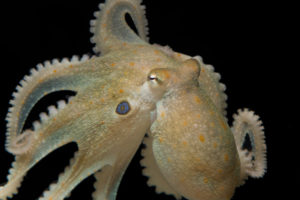DNA Science in 2017
The year has ended for me with an unexpected irony.
On December 19, the FDA stamped its final approval on the first gene therapy for an inherited disease. Luxturna delivers a functioning RPE65 gene into the retinas, enabling people to see who were otherwise destined for blindness. The RPE65 story has been part of my life for a decade, in a steady stream of articles, then the book The Forever Fix: Gene Therapy and the Boy Who Saved It, and then a splash of posts in 2017 as the hurdles to market fell. RPE65-mediated inherited retinal dystrophy is exceedingly rare, as are most of the medical conditions I write about. Many posts here have focused on the tireless work of families to push forward treatments for the rarest of the rare, even possibly cures.
Yet when the announcement came last week of that first gene therapy approval for a Mendelian condition, I couldn’t cover it because I was having surgery. How ironic to be incapacitated by a disease as common as breast cancer exactly when the treatment for the extremely rare blindness became real!
I’m thrilled at the long-anticipated approval. At the same time, the ease with which I was diagnosed and treated, with the comfort of an instant thousands-strong online community and an entire month devoted to awareness each year, contrasted so sharply with what I’ve reported of the “diagnostic odysseys” that families with rare diseases have traversed. Thankfully, exome and genome sequencing are finding answers much faster these days, but the families still have to contend with, at some point, medical professionals who’d never heard of their particular illnesses. Some diseases are still one-of-a-kind.
Because my brain is still somewhat fuzzy, this last post of 2017 will summarize the year. DNA Science has covered the usual suspects: stem cells, gene expression and epigenetics, forensics, fiction, genetic testing, and of course gene therapy and gene editing. I’ve scrutinized a few intriguing genomes: spinach, wolves, pumpkins, and octopi. When breaking news in genetics coincided with my Thursday posting day, such as new treatments for spinal muscular atrophy, I covered it, but I prefer to find the stories that other writers miss.
 I’ve tried to stay away from politics for mental health purposes, but it’s been challenging. That I even had to write White Supremacy: The Dark Side of Eugenics in the present tense, after Charlottesville and the presidential normalization of hate, is still beyond my comprehension.
I’ve tried to stay away from politics for mental health purposes, but it’s been challenging. That I even had to write White Supremacy: The Dark Side of Eugenics in the present tense, after Charlottesville and the presidential normalization of hate, is still beyond my comprehension.
Earlier in the year, DNA Science covered Saving GINA: Is Genetic Privacy Imperiled? And a shout-out to the always entertaining Kellyanne Conway for inspiring “12 Alternative Facts of Human Genetics.” That science even has alternative facts (as opposed to hypotheses) came as a surprise to this long-time biology textbook author. Who knew it was so complicated?
But controversy wasn’t just US-based. My coverage of the infant in the UK who couldn’t be saved from a rare mitochondrial disease, Charlie Gard, led to a dialog with his mum (she contacted me) that unfortunately lawyers silenced before I could blog about it. That story clearly isn’t finished, and I hope she gets back in touch.
I’m grateful to PLOS for providing the platform for me to reach into my academic past and weave context into today’s research and narratives of genetics and genomics. So here is a linked list of the year’s DNA Science posts.
 DNA Testing Kits As Holiday Gifts Can Bring Surprises (12/14/17)
DNA Testing Kits As Holiday Gifts Can Bring Surprises (12/14/17)
An Argument Against Gene Drives to Extinguish New Zealand Mammals: Life Finds a Way (11/30/17)
The Peacable Genomes of Pumpkins (11/23/17)
The Biology of “Stranger Things” (11/16/17)
Revealing The Subtext in DNA Sequences (11/9/17)
Two New Ways to Treat a Deadly Disease: Spinal Muscular Atrophy (11/2/17)
What Should Gene Therapy Cost? (10/26/17)
As Blindness Gene Therapy Nears FDA Finish Line, a Shout-Out to Activist Families (10/12/17)
Brain Cancer in Kids: Tailoring Treatment Based on Mutations (10/5/17)
Poliovirus to Treat Brain Cancer: A Curious Chronology (9/28/17)
White Supremacy: The Dark Side of Eugenics (9/21/17)
Gene Therapy and September Scenes (9/14/17)
A Genetic Disease with a Domino Effect: Multiple Sulfatase Deficiency (9/7/17)
Were Ancient Humans Healthier Than Us? (8/31/17)
Genome Cloaking Preserves Privacy While Enabling Diagnosis (8/17/17)
Are Stem Cell Companies Abusing Clinicaltrials.gov? (8/10/17)
Charlie Gard Post-Mortem: Could He Have Been Saved? (8/3/17)
Luxturna: A Giant Step Forward for Blindness Gene Therapy – A Conversation with Dr. Kathy High (7/20/17)
Salvation: Sexual Stereotypes in Sappy Summer SciFi Series (7/13/17)
Cystic Fibrosis Among Asians: Why Ethnicity-based Genetic Testing is Obsolete (7/7/17)
Can CRISPR Conquer Huntington’s? (6/29/17)
Post-Election Health Effects … Not Just Psychological? (6/15/17)
Spinach Genome Reveals a Living Fossil (6/1/17)
5 New Buzzwords Borrowed from Biology (5/25/17)
Will Short Term and Long Term Treatments for Single-Gene Diseases Survive? (5 /18/17)
An American Horror Story: The AHCA and Anencephaly (5/11/17)
Did Christianity Speed Chicken Evolution? (5/4/17)
Pulling the Plug on the First Gene Therapy Drug (4/27/17)
Dueling BRCA Databases: What About the Patient? (4/20/17)
After Gene Therapy: Hannah’s Journey Continues (4/13/17)
Octopuses, Squid, and Cuttlefish: RNA Editing Instead of Genome Evolution? (4/6/17)

What’s in a Placenta? A Transcriptomic View (3/30/17)
A New View of Diabetes? (3/23/17)
Blinded by Stem Cells (3/16/17)
Saving GINA: Is Genetic Privacy Imperiled? (3/9/17)
Is Transgender Identity Inherited? (3/2/17)
Rare Disease Day 2017: Talia’s Story (2/23/17)
Defying Mendelian Genetics and “Embryo Engineering” 2/16/17
Pig People? (2/2/17)
12 Alternative Facts of Human Genetics (1/26/17)
A Necessary Retelling of the Smallpox Vaccine Story (1/12/17)
Gene Action Tracks an Autoimmune Disease: Systemic Sclerosis (1/5/17)
A happy and healthy New Year to all!




[…] DNA Science in 2017 PLoS Blogs (blog) […]